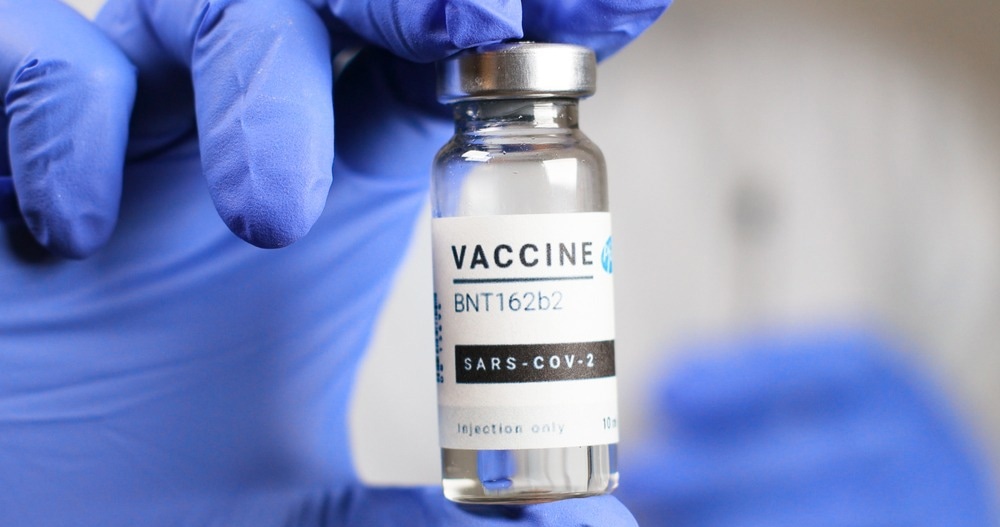In a recent study published in The Lancet Infectious Diseases, researchers evaluated the vaccine effectiveness (VE) of Pfizer-BioNTech’s BNT162b2 coronavirus disease 2019 (COVID-19) vaccines against severe acute respiratory syndrome coronavirus 2 (SARS-CoV-2) Omicron BA.4/5.
 Study: BNT162b2 vaccine effectiveness against SARS-CoV-2 omicron BA.4 and BA.5. Image Credit: Irina Shatilova/Shutterstock
Study: BNT162b2 vaccine effectiveness against SARS-CoV-2 omicron BA.4 and BA.5. Image Credit: Irina Shatilova/Shutterstock
Background
Omicron BA.4 and Omicron BA.5 subvariants were initially detected in Southern parts of Africa towards the end of 2021. The subvariants include F486V and L452R mutations, and their spike (S) glycoproteins are similar, due to which they are commonly referred to as Omicron BA.4/5. The S protein receptor-binding domain (RBD) mutations enhance the virulence and immune evasiveness of the subvariants.
Studies have reported lower neutralizing immune responses for Omicron BA.4 and BA.5 compared to those for Omicron BA.1 and BA.2, and therefore, the immunogenicity of SARS-CoV-2 vaccines for Omicron BA.4/5 needs to be evaluated.
About the study
In the present test-negative study, researchers determined BNT162b2 VE against Omicron BA.4/5.
The study comprised Kaiser Permanente (KP) health insurance provider members in California, United States of America (USA) above 18 years of age, tested for COVID-19 by polymerase chain reaction (PCR) at either of the four healthcare settings [outpatient settings (OP, n=13,718), centers for urgent care (UC, n=7977), emergency departments (ED, n=1867), and hospitals (n=794) between 9 May and 26 August 2022.
Omicron subvariants were identified based on calendar times, WGS (whole genome sequencing) analysis, and SARS-CoV-2 spike (S)-gene target failure (SGTF) analysis findings. A total of 24,356 healthcare encounters were considered for the analysis of double-dose and triple-dose VE. Among the participants, 24% (n=5793), 25% (n=5997) and 52% (n=12,566) of participants were unvaccinated, fully vaccinated and booster vaccinated (third dose, D3), respectively.
Results
Of 24,536 healthcare encounters, 38% (n=5182), 20% (n=1556), 31% (n=575), and 16% (n=123) OP, UC, ED, and hospital encounters, respectively were found to be SARS-CoV-2-positive. A median value of 44 (in years) was observed for participant age, and most (65%) of the participants were females. VE estimates against Omicron BA.4/5 post-double doses (D2) were ≤50%, irrespective of the outcomes and days elapsed since the most recent vaccine dose.
At <0.5 years post-third vaccination, VE was 73% against Omicron BA.4/5-associated hospitalization; however, VE estimates observed were ≤50% for milder COVID-19 outcomes.VE estimates were >50% against Omicron BA.4/5-associated OP, UC, and ED health encounters in the initial three months post-booster vaccination.
At ≥0.5 years after booster vaccination, lower protection was observed against Omicron BA.4/5 compared to earlier study time intervals, even for hospitalizations. The fourth dose (D4) was administered to 24% (n=3029) of the study participants. D4 restored immune protection levels exceeding those observed ≥0.5 years of D3 to levels similar to levels at <6 months post-D3. Similar findings were observed after excluding immunocompromised individuals.
For two-dose vaccinations, VE estimates at <0.5 years since D2 for hospital, ED, UC, and OP encounters were not calculated (NC), 30, 50, and 30, respectively. The corresponding estimates at ≥0.5 years since D2 were -4.0, 44, 7.0, and 19, respectively, with overall VE estimates for double vaccinations of -4.0, 44, 11, and 21, respectively.
For three-dose BNT162b2 vaccinations, VE estimates at <0.25 years since D3 for hospital, ED, UC, and OP encounters were NC, 71, 59, and 55, respectively. The corresponding estimates for three to five months since D3 were 72, 36, 28, and 23, respectively. At <0.5 years since D3, the corresponding estimates were 73, 43, 34, and 29, respectively. At ≥0.5 years since D3, the estimates were 38, 37, 11, and 6.0, respectively. The overall estimates for triple vaccinations were 50, 39, 20, and 17, respectively.
For four-dose BNT162b2 vaccinations, VE estimates for hospital, ED, UC, and OP encounters at <0.25 years since D4 were observed were 66, 65, 37, and 28, respectively. The corresponding estimates ≥0.25 years since D4 were 33, 78, 20, and 11, respectively, with overall VE estimates for four-dose vaccinations of 60, 69, 32 and 25, respectively.
Conclusion
Overall, the study findings showed that double BNT162b2 vaccination conferred limited immune protection against Omicron BA.4 and BA.5 infection severity outcomes, including hospitalizations. D3 and/or D4 did improve immune responses against Omicron BA.4 and BA.5, but the immune protection waned within three months against milder infection outcomes such as OP, UC, or ED encounters and after six months against Omicron BA.4- and BA.5-associated hospitalizations. The findings underpinned booster vaccine administration.
Study limitations
The study limitations included the potential for confounding effects between unvaccinated and vaccinated individuals. In addition, even though the team controlled for the week of COVID-19 diagnosis, naturally acquired immunity, which could not be measured adequately, could impact the VE estimates. In particular, if several unvaccinated persons gained naturally acquired immunity during Omicron BA.1 and BA.2 predominance, the findings could bias VE estimates downward.